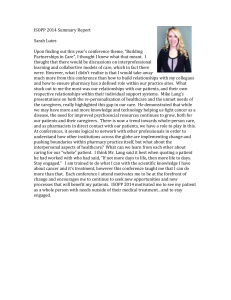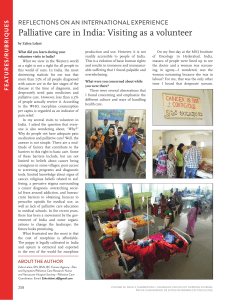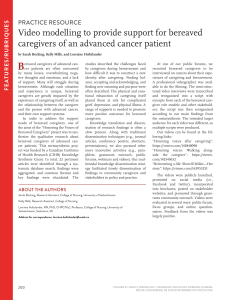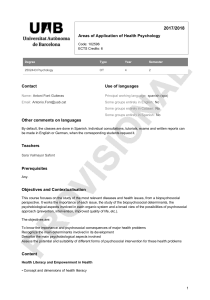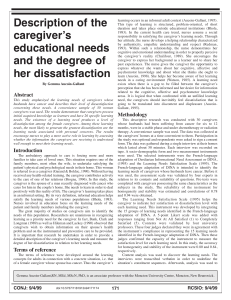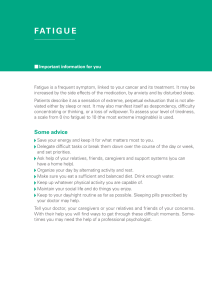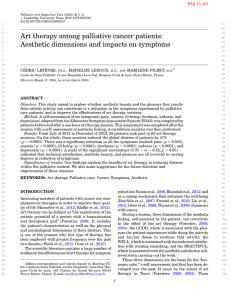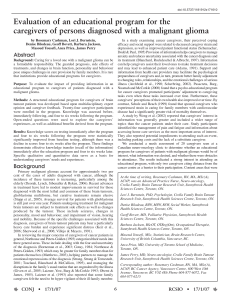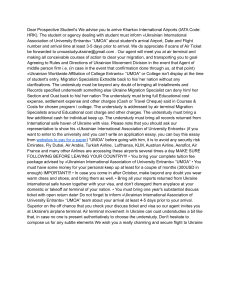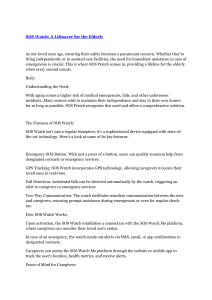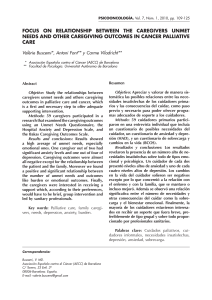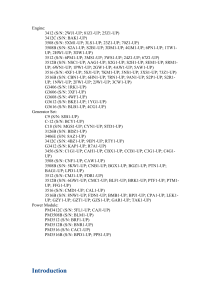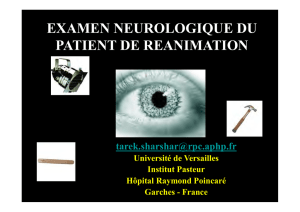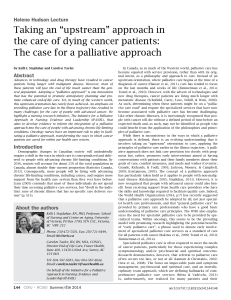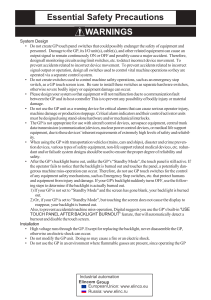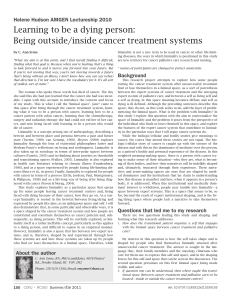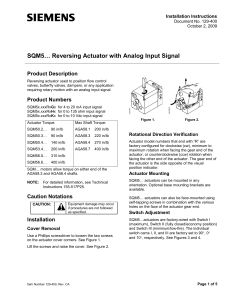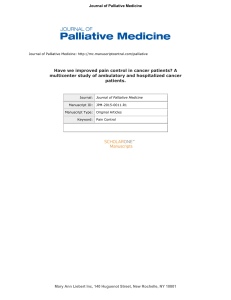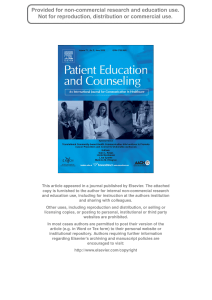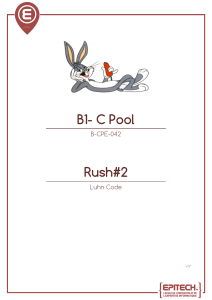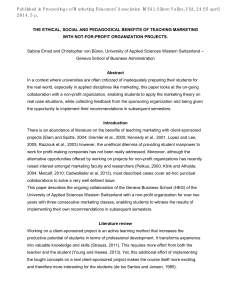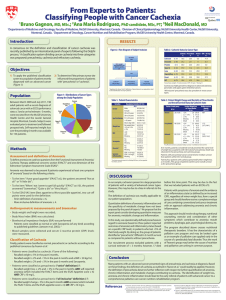IMPORTANCE OF ADVANCED DIRECTIVES : DESCIPTION OF A COMPLICATED CASE IN A PALLIATIVE CARE UNIT
publicité
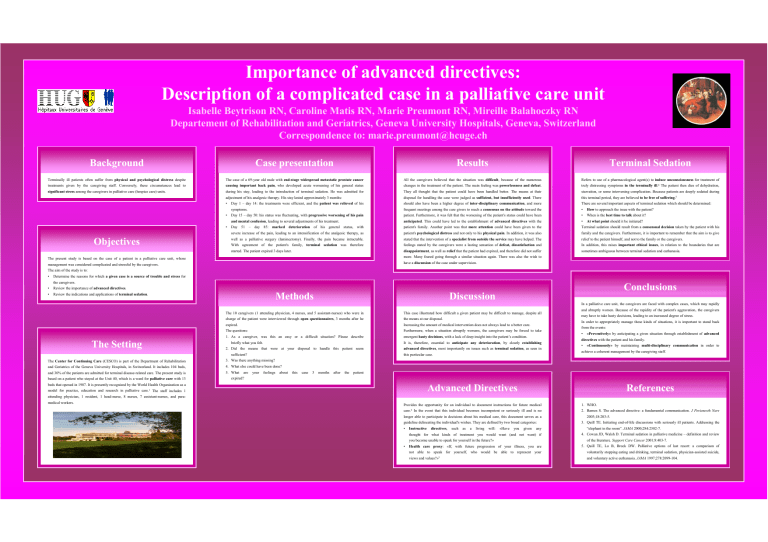
Importance of advanced directives: Description of a complicated case in a palliative care unit Isabelle Beytrison RN, Caroline Matis RN, Marie Preumont RN, Mireille Balahoczky RN Departement of Rehabilitation and Geriatrics, Geneva University Hospitals, Geneva, Switzerland Correspondence to: [email protected] Background Case presentation Results Terminal Sedation Terminally ill patients often suffer from physical and psychological distress despite The case of a 69-year old male with end-stage widespread metastatic prostate cancer All the caregivers believed that the situation was difficult, because of the numerous Refers to use of a pharmacological agent(s) to induce unconsciousness for treatment of treatments given by the caregiving staff. Conversely, these circumstances lead to causing important back pain, who developed acute worsening of his general status changes in the treatment of the patient. The main feeling was powerlessness and defeat. truly distressing symptoms in the terminally ill.4 The patient then dies of dehydration, significant stress among the caregivers in palliative care (hospice care) units. during his stay, leading to the introduction of terminal sedation. He was admitted for They all thought that the patient could have been handled better. The means at their starvation, or some intervening complication. Because patients are deeply sedated during adjustment of his analgesic therapy. His stay lasted approximately 3 months: disposal for handling the case were judged as sufficient, but insufficiently used. There this terminal period, they are believed to be free of suffering.5 • Day 1 – day 14: the treatments were efficient, and the patient was relieved of his should also have been a higher degree of inter-disciplinary communication, and more There are several important aspects of terminal sedation which should be determined: symptoms. frequent meetings among the care givers to reach a consensus on the attitude toward the • How to approach the issue with the patient? • Day 15 – day 50: his status was fluctuating, with progressive worsening of his pain patient. Furthermore, it was felt that the worsening of the patient's status could have been • When is the best time to talk about it? and mental confusion, leading to several adjustments of his treatment. anticipated. This could have led to the establishment of advanced directives with the • At what point should it be initiated? • Day 51 – day 85: marked deterioration of his general status, with patient's family. Another point was that more attention could have been given to the Terminal sedation should result from a consensual decision taken by the patient with his severe increase of the pain, leading to an intensification of the analgesic therapy, as patient's psychological distress and not only to his physical pain. In addition, it was also family and the caregivers. Furthermore, it is important to remember that the aim is to give well as a palliative surgery (laminectomy). Finally, the pain became intractable. stated that the intervention of a specialist from outside the service may have helped. The relief to the patient himself, and not to the family or the caregivers. With agreement of the patient's family, terminal sedation was therefore feelings stated by the caregivers were a lasting sensation of defeat, dissatisfaction and In addition, this raises important ethical issues, in relation to the boundaries that are started. The patient expired 3 days later. disappointment, as well as relief that the patient had expired, and therefore did not suffer sometimes ambiguous between terminal sedation and euthanasia. Objectives The present study is based on the case of a patient in a palliative care unit, whose more. Many feared going through a similar situation again. There was also the wish to management was considered complicated and stressful by the caregivers. have a discussion of the case under supervision. The aim of the study is to: • Determine the reasons for which a given case is a source of trouble and stress for • Review the importance of advanced directives. • Review the indications and applications of terminal sedation. the caregivers. Conclusions Methods Discussion The 10 caregivers (1 attending physician, 4 nurses, and 5 assistant-nurses) who were in This case illustrated how difficult a given patient may be difficult to manage, despite all charge of the patient were interviewed through open questionnaires, 3 months after he the means at our disposal. expired. Increasing the amount of medical intervention does not always lead to a better care. The questions: Furthermore, when a situation abruptly worsens, the caregivers may be forced to take 1. As a caregiver, was this an easy or a difficult situation? Please describe emergent hasty decisions, with a lack of deep insight into the patient’s condition. In a palliative care unit, the caregivers are faced with complex cases, which may rapidly The Setting briefly what you felt. sufficient? 3. Was there anything missing? and Geriatrics of the Geneva University Hospitals, in Switzerland. It includes 104 beds, 4. What else could have been done? and 30% of the patients are admitted for terminal disease-related care. The present study is 5. What based on a patient who stayed at the Unit 40, which is a ward for palliative care with 13 are advanced directives, most importantly on issues such as terminal sedation, as seen in this particular case. The Center for Continuing Care (CESCO) is part of the Department of Rehabilitation your feelings about this case 3 months after the may have to take hasty decisions, leading to an increased degree of stress. In order to appropriately manage these kinds of situations, it is important to stand back It is, therefore, essential to anticipate any deterioration, by clearly establishing 2. Did the means that were at your disposal to handle this patient seem and abruptly worsen. Because of the rapidity of the patient's aggravation, the caregivers from the events: • «Preventively» by anticipating a given situation through establishment of advanced directives with the patient and his family. • «Continuously» by maintaining multi-disciplinary communication in order to achieve a coherent management by the caregiving staff. patient expired? beds that opened in 1987. It is presently recognized by the World Health Organization as a References Advanced Directives model for practice, education and research in palliative care.1 The staff includes 1 attending physician, 1 resident, 1 head-nurse, 8 nurses, 7 assistant-nurses, and paramedical workers. Provides the opportunity for an individual to document instructions for future medical 1. WHO. care.2 In the event that this individual becomes incompetent or seriously ill and is no 2. Barnes S. The advanced directive: a fundamental communication. J Perianesth Nurs longer able to participate in decisions about his medical care, this document serves as a guideline delineating the individual's wishes. They are defined by two broad categories: • Instructive directives, such as a living will: «Have you given any thought for what kinds of treatment you would want (and not want) if you become unable to speak for yourself in the future?» • 2003;18:203-5. 3. Quill TE. Initiating end-of-life discussions with seriously ill patients. Addressing the “elephant in the room”. JAMA 2000;284:2502-7. 4. Cowan JD, Walsh D. Terminal sedation in palliative medicine – definition and review of the literature. Support Care Cancer 2001;9:403-7. Health care proxy: «If, with future progression of your illness, you are 5. Quill TE, Lo B, Brock DW. Palliative options of last resort: a comparison of not able to speak for yourself, who would be able to represent your voluntarily stopping eating and drinking, terminal sedation, physician-assisted suicide, views and values?»3 and voluntary active euthanasia. JAMA 1997;278:2099-104.
